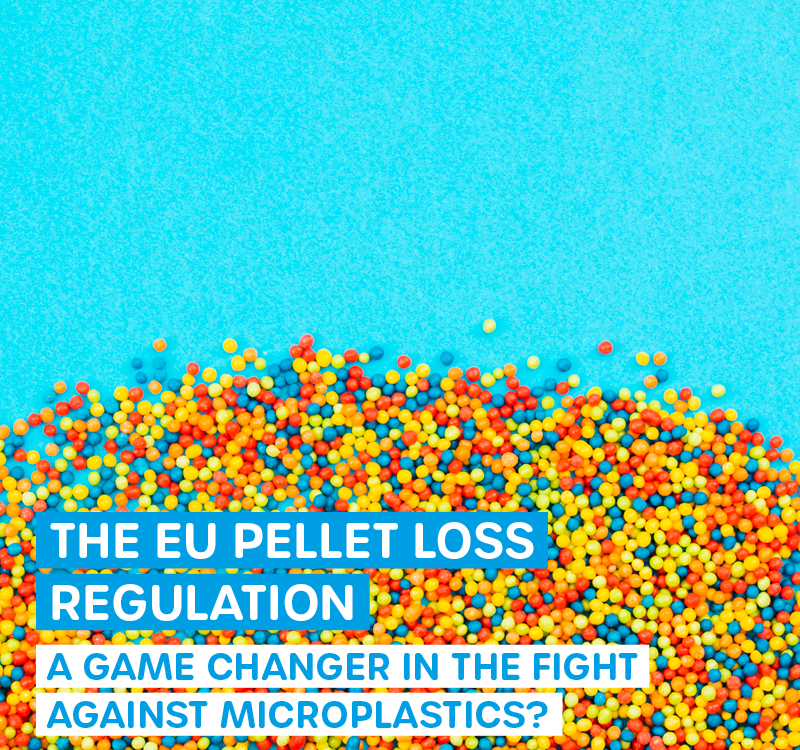
Water-soluble polymers
22. July 2025
Our path to comparable microplastics data
26. July 2025Theory of Change for Microplastic Control: How Wasser 3.0 Achieves Systemic Impact
The microplastic crisis is one of the greatest environmental challenges of our time. But how can we move from isolated solution approaches to systemic transformation? The Theory of Change provides a framework for strategic impact acceleration – and Wasser 3.0 demonstrates how this approach works in practice.
The Microplastic Challenge: More Complex Than Expected
The dimension of the microplastic problem far exceeds previous estimates. Current studies from 2024 and 2025 show a drastic picture:
Industry has already been scientifically identified as a systemic entry path: The most important structural entry path is the entire plastic value chain – from production through processing to recycling. Primary microplastic Type B already emerges during the use of plastic products and is directly introduced as microplastic into the environment already during production and also e.g. during tire use and tire wear generation.
Wastewater treatment plants are also a central location where microplastics enter the environment: What was previously considered a success story turns out to be simply a displacement of the problem upon closer examination. Although modern wastewater treatment plants retain over 95 % of inflowing microplastics according to some scientific studies, each treatment plant still emits between 93 million and 8.2 billion plastic particles per year into rivers and seas. The retained microplastics accumulate in sewage sludge and re-enter the environment through agricultural use. And precisely at these points, the Theory of Change serves as a strategic planning instrument for genuine systemic transformation.
Theory of Change: The Lever for Systemic Transformation
The Theory of Change (ToC) is far more than a planning tool – it is a method for strategic impact acceleration. The basic idea of ToC is to create the conditions within a systematic planning process to achieve the intended effects of the planned campaign. For environmental problems like microplastics, it offers three crucial advantages:
- Systemic Thinking Instead of Symptom Control
Starting from an overarching vision that serves to orient toward a common goal and is developed by the team, team members discuss the necessary long-, medium-, and short-term milestones ("backcasting"). For microplastics, this means: Not only removal from water, but prevention of entry at the source, creation of new value chains, and awareness building in society and politics.
- Identifying Impact Pathways
These milestones can in turn be clustered into so-called impact pathways – areas where changes are necessary. For microplastic-free water, we identify the following impact pathways: Technology development, market development, pilot and lighthouse projects, actor interaction, legal frameworks, and a paradigm shift.
- Iterative Adaptation and Learning
A ToC is particularly suitable for complex projects and must be continuously evaluated and adapted to account for feedback and side effects.
Wasser 3.0: Theory of Change in Practice
We demonstrate how a well-thought-out Theory of Change leads to impact acceleration in the microplastic field. Our approach shows all core elements of a successful ToC:
Vision: Water Without Microplastics
We provide levers for water without microplastics through responsible research, impact technologies, educational offerings, and communication. This clear vision defines the long-term goal and creates common orientation for all stakeholders.
Innovative Technology Approach: Clump & Skim
With Wasser 3.0 PE-X®, we have developed the first filter-free process solution for fast, efficient, and cost-effective removal of microplastics and other pollutant classes from various waters. According to the principle of agglomeration fixation (short: Clump & Skim) and through precise coordination of materials and technology for each process, all microplastic particles are clumped into particle compounds - regardless of polymer type or water type. This technology revolutionizes microplastic removal: The process is based on the use of hybrid silica gels and is ecotoxicologically harmless. Our pilot plants operate in Landau, on Mykonos, and in industries and remove kilos of microplastics daily from our water cycles, creating genuine circular economy through wastewater and waste reuse.
Multidimensional Impact Pathways for More Water Without Microplastics
We systematically pursue several impact pathways in parallel:
- Technology Development & Scaling
Our low-tech plants and filter-free processes perform significantly better than competitors in all parameters and can be cost-effectively implemented not only in central wastewater treatment plants but especially within the plastic value chain as a precautionary measure.
- Creating Data Foundations
Novel fluorescence markers and a standardized procedure for sampling, sample preparation, and microplastic analysis enable rapid data provision. While other studies still rely on outdated data from the 1970s, we continuously provide current measurement data.
- Establishing Circular Economy
Wasser 3.0 reuse ends linear action; treated waters and removed agglomerates are reused. Waste, including microplastic agglomerates from our removal processes, are valuable materials that can be used, for example, in the construction industry.
- Education and Awareness Creation
With us, innovative water technology goes hand in hand with application-based fundamental research as well as transformative education and awareness initiatives.
Systemic Assumptions, External Factors, and Impact Acceleration Through Strategic Partnerships
We consider critical external assumptions: The EU is working on standardizing microplastic measurement methods, but regulation and control remain insufficient. By 2025, UN limit values for tire wear are to be decided for the first time. It's clear: Wastewater treatment needs innovations and long-term data. Because then economic opportunities arise through circular economy.
A key element of our Theory of Change is strategic collaboration with various actors. For example, in the EU project UPSTREAM, we are developing innovative solutions for the future of clean water together with Van Remmen UV Technology. In the EU project REMEDIES, we are transferring our microplastic analysis and removal technology to European countries.
These partnerships enable:
- Technology scaling
- Political influence
- Scientific validation
- Market access and acceptance
Essential: Success Measurement and Adaptation
A Theory of Change is only a good foundation if it is continuously evaluated and adapted. We demonstrate this iterative adaptation through:
- Continuous monitoring of over 700 wastewater treatment plant samples
- Water monitoring at over 500 sampling points
- Adaptation of technology to different water types
- Development of customized solutions for various industries
Lessons Learned: Theory of Change for Environmental Challenges
Our example shows five central success factors for applying the Theory of Change to environmental problems:
- Develop Systemic Understanding
Microplastics are not just a technical problem, but a systemic one that encompasses technology, politics, economics, and society.
- Work on Multiple Impact Pathways Simultaneously
Technology development alone is not enough – parallel work on regulation, awareness building, and market mechanisms is needed.
- Make Assumptions Explicit and Test Them
External factors such as political developments and market readiness must be continuously observed and integrated into the strategy.
- Build Partnerships Strategically
Cooperations with wastewater treatment plant operators, EU projects, and research institutions accelerate impact exponentially.
- Think Circular from the Beginning
Thermal incineration is, if at all, the last option for us. Sustainable solutions create new value creation instead of just disposal.
Outlook: From Theory to Systemic Practice
An impact-oriented approach means: Plan what can be planned so that you can be all the more flexible in what must be developed from practice.
The Theory of Change is not a rigid recipe, but a dynamic framework for systemic change. At Wasser 3.0, we show how strategic planning, technological innovation, and social transformation can work together.
For other environmental challenges: The Theory of Change provides a comprehensive description and presentation of how and why a desired change is expected in a specific context. It focuses particularly on mapping the "missing middle" between what a program or change initiative does and how this leads to achieving desired goals.
The key lies in bridging this "missing middle" – between what we do and the systemic change we want to achieve. Microplastic-free water is possible – if we think strategically and act systemically.






